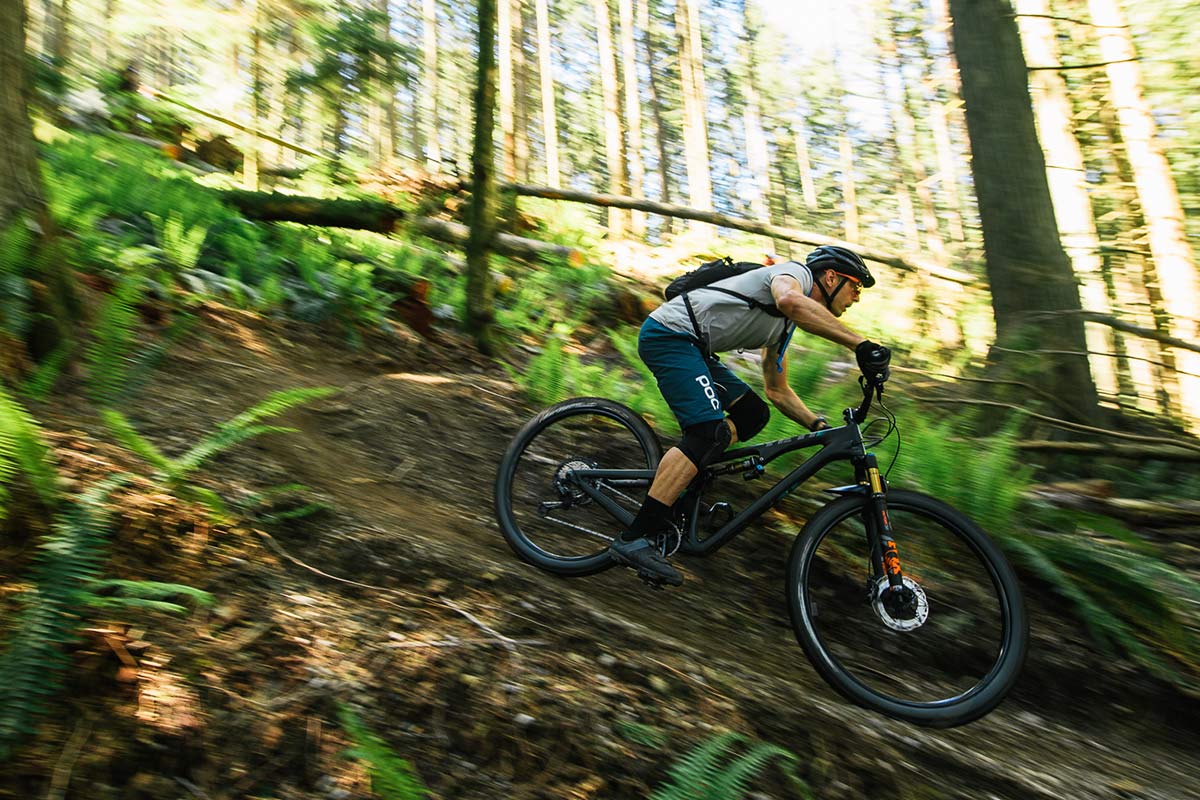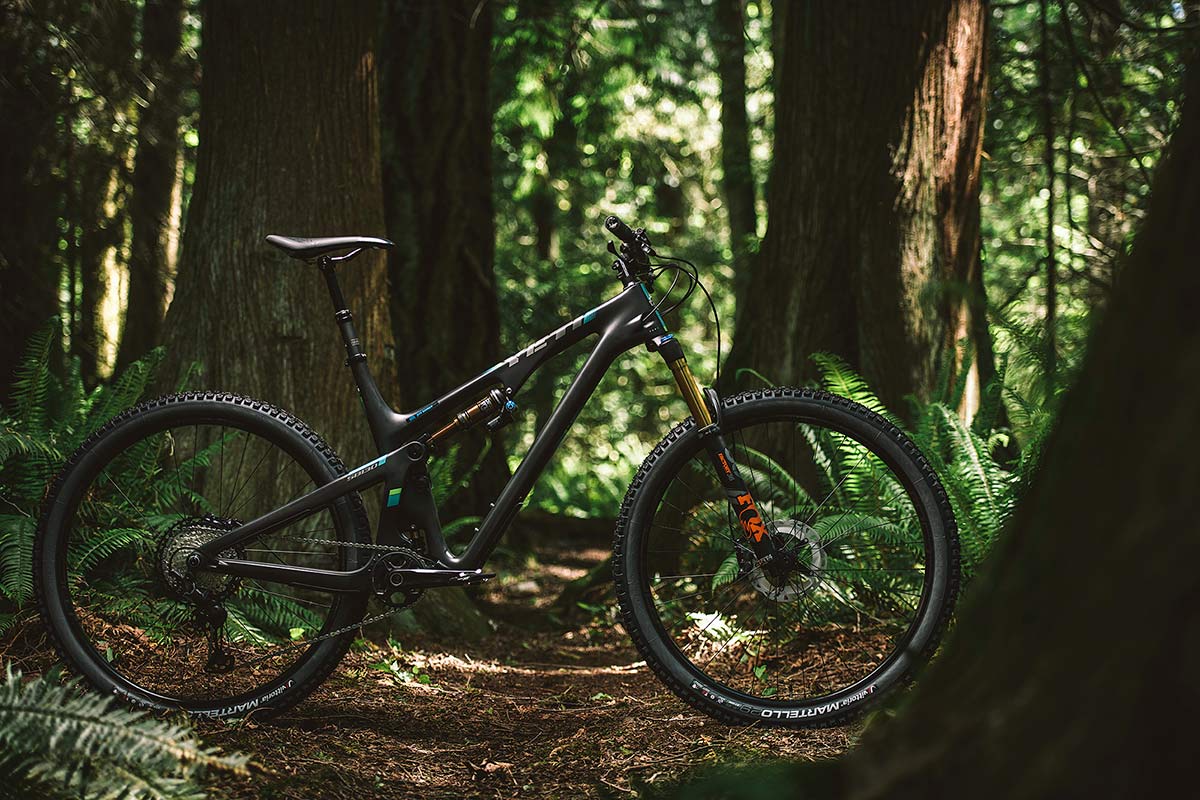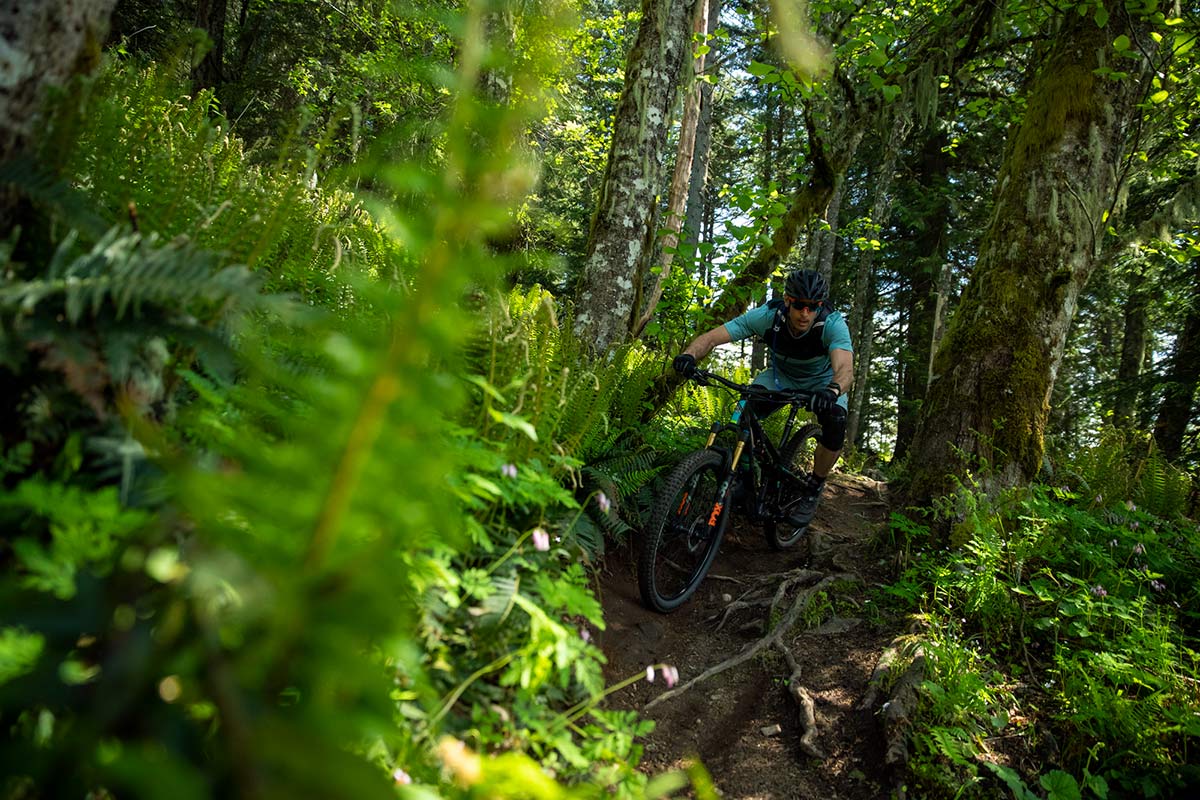Surrounding the official presentation, we spent two days ripping around the Bellingham, WA, trails on the all-new Shimano XT M8100 group. Check out our complete tech overview for all the details on that and the new SLX group, and our mega-specs list, weights & pricing comparison post here. In this story I’m reporting on XT’s trail performance.
My test bike was outfitted with the 4-piston trail brakes and a 1x drivetrain with a 32-tooth front chainring and the 10-51 12-speed cassette. It also had the new XT wheels and hubs with the revised Scylence system inside, trail pedals, their own dropper remote controlling a PRO dropper seatpost, and a PRO cockpit. I’ll touch on those other things, but the focus is how the new drivetrain handled climbs, descents, sprints, and shifting under load.
Great, but what bike was it on?
The fleet of test bikes included a number of brands, but they put me aboard the Yeti SB130, which proved to be a good all-round bike for the Bellingham trails. Its BB is definitely low, resulting in quite a few pedal strikes, but overall decent handling, particularly at speed. Bellingham’s trails are expansive and varied, with everything from dry dirt to perfect loam, some roots and rocks, and inclinations from almost 28º to sheer drops. There’s even a sick jump line with options for all skill levels. Throw in the amazing outdoor culture, killer bike-friendly vibe (and tons of pros and others to ride with), and I kinda want to move there now. We need a West Coast Bikerumor office, right?
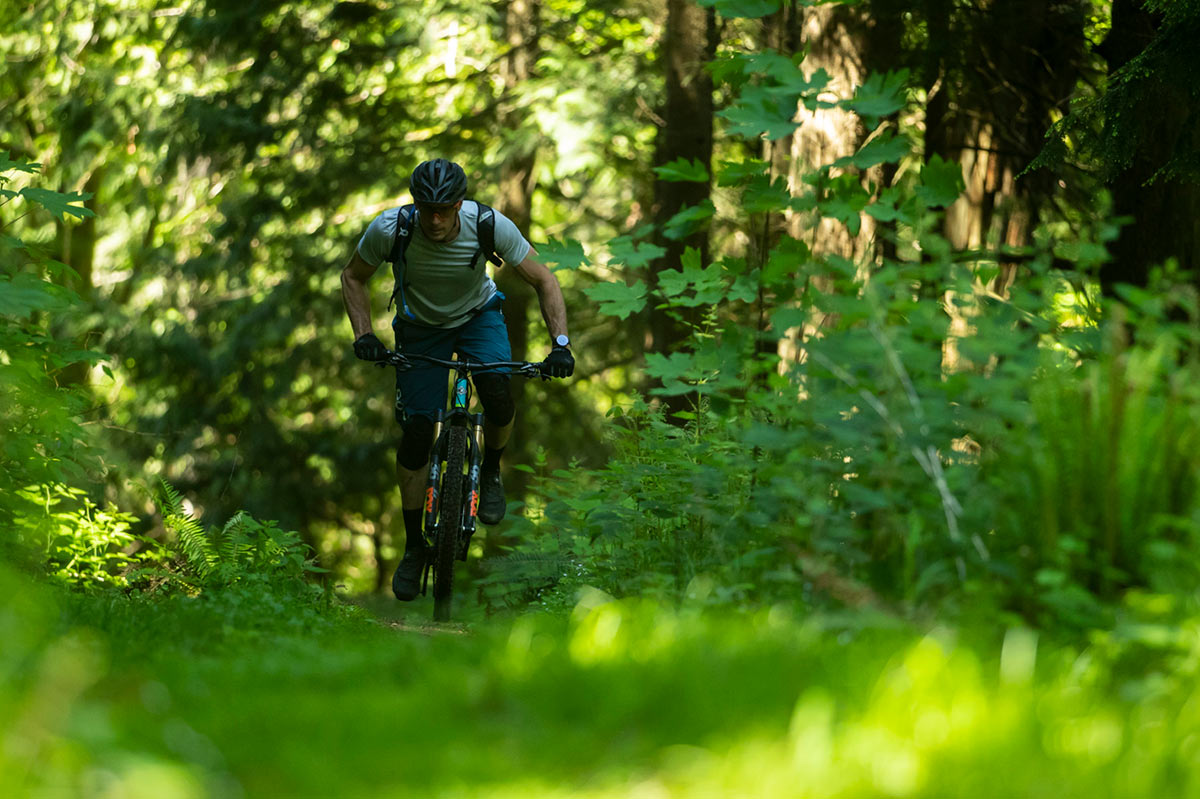
Shifting is e-XT-ra good
The big news with the new XT revolves around axle-width compatibility options and the addition of Hyperglide+ to the cassettes. The latter is what makes shifting ultra-smooth in both directions, and it worked to a tee. Shifting under load, like when a sudden incline surprises you and requires an emergency dumping of gears as you’re already starting up the hill, is no problem. Shimano figured that out long ago with Hyperglide.
It’s dropping the hammer in the other direction that left the chain a bit confused. With no specific tooth shaping or ramps to guide it, things could get harsh. That “clunk-clunk-clunk” of slamming the chain into a smaller cog when you’re sprinting for the finish wasn’t addressed until the new XTR group came out last year. The solution is Hyperglide+ and it works pretty well. In a race environment, I’d want to start shifting to a harder gear as I crested a climb or came out of a technical section and started putting down the power. Now, I don’t have to be as careful metering out the stomps with the shifts.
So is the braking
I’ve long preferred a more linear feel to my brakes, and earlier ServoWave braking came on rather harshly for my tastes. But recent models have seemed to level out the abrupt transition, and these new brakes seem even better. Power delivery came on smoothly, and it always felt like more was on tap if needed. There were several descents where we (I, anyway) definitely dragged them nearly continuously for a couple minutes, but never felt any fade. Impressive.
Chain management works like a champ
It wasn’t until I started writing up this review and reflecting upon my time with XT that the flawless performance really dawned on me. I can’t recall a single chain slap, skipped shift, or noisy segment. Shimano’s clutch worked great, and you can turn it off for easier setup and wheel swaps. Even with it on, shifting action felt light, and quick to engage. Which is good for someone like me to tends to give the thumb lever a half-assed effort quite frequently. It takes that meager input and finishes the shift, yet I don’t think it ever over-shifted with a more aggressive push. Indexed shifting was invented by Shimano, and they’ve mastered it here.
I also really like the double-shift capability of the release trigger. For racers looking to shave a fraction of a second during a sprint, it’s a nice bonus that you’ll only find on XT and XTR.
The other side of the chain management coin is the actual chain and front chainrings. Here, Shimano’s trickledown of their DCE+ (Dynamic Chain Engagement+) inner chain link design meshes with the tooth profiles to provide nearly silent operation. The other thing it does? Almost eliminates that weird grindy/chunky engagement vibration that can be felt with some other narrow-wide designs. Even on the extreme ends of the cassette, it felt smoother than other setups. Of course, everything we were riding was brand new, too, so we’ll report back with our long-term test once the group arrives. (Also, we’ll have actual weights then, too, as the parts available at the event were all pre-production samples that may not have weighed the same as full production, so we decided to wait)
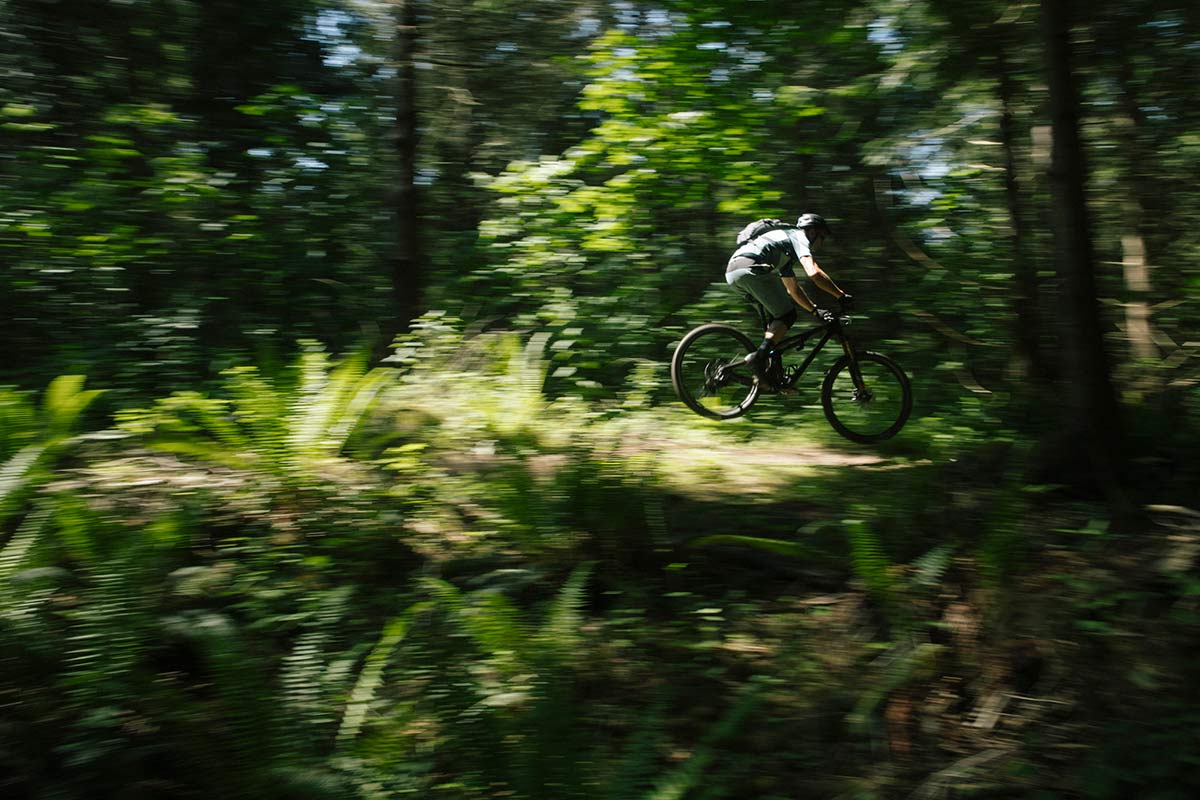
Running Silent, Running Deep
Two more things worth noting: The non-Scylence silent hubs are impressive. Yeah, Shimano-branded wheels and hubs seem to be a harder sell every year with so many aftermarket wheel options, but dang were these nice. Why? Because even they they switched up the way their drive plates are sprung, it’s still a virtually silent hub. So, if you’re in the stealth camp and annoyed by Chris-King-and-Industry-Nine-levels of decibels, these are definitely worth a look.
From an OEM standpoint, it’s nice to see Shimano jumping in full bore to all appropriate crank spindle and chainline standards to handle regular, Boost and Super Boost. This, along with having two new groups to hit the price-point sweet spots for new bikes should help them quickly claw back market share.
In case you haven’t seen the tech overview video, here it is again and shows some riding action and how the group shifts (with slow motion Dynashift+ action!):
So, it’s all good?
Mostly, yes. The fact that Shimano can deliver all the best features of XTR for almost a grand less is impressive. The fact that they can improve upon the things that delayed XTR, more so. And that they’re actually going to be shipping the new XT and SLX groups within a couple weeks? Awesome.
The two things I’m most eager to see in a long term test is how the two-piece direct-mount chainring system holds up. Marrying a steel chainring with alloy spider is good for bringing down costs, but adding a tooled interface at a high stress joint seems like it might be a maintenance issue. Normal chainring bolts can come loose, so maybe these can, too. The other thing is widespread adoption of Microspline, which is required to use the new groups’ cassettes. Wheel and hub brands that we’ve talked to are all chomping at the bit to make them, but (the unofficial) word on the street from some of them is that Shimano is being too slow to license the design to new partners. This might be one of the biggest hurdles to widespread adoption for aftermarket, but less of an issue for OEM spec on new bikes.
Overall, the new XT group is amazing and, dare I say, worth the wait. It brings a few new technologies to more affordable price points and arguably delivered it better than XTR. And definitely cheaper.
What the heck were you talking about?
Not sure what I’m talking about in this review? Be sure to check out:
- Complete XT M8100 & SLX M7100 tech overview
- Prices, specs & weights comparison for SLX, XT & XTR (coming soon)
Now, bring on the long term test group…
